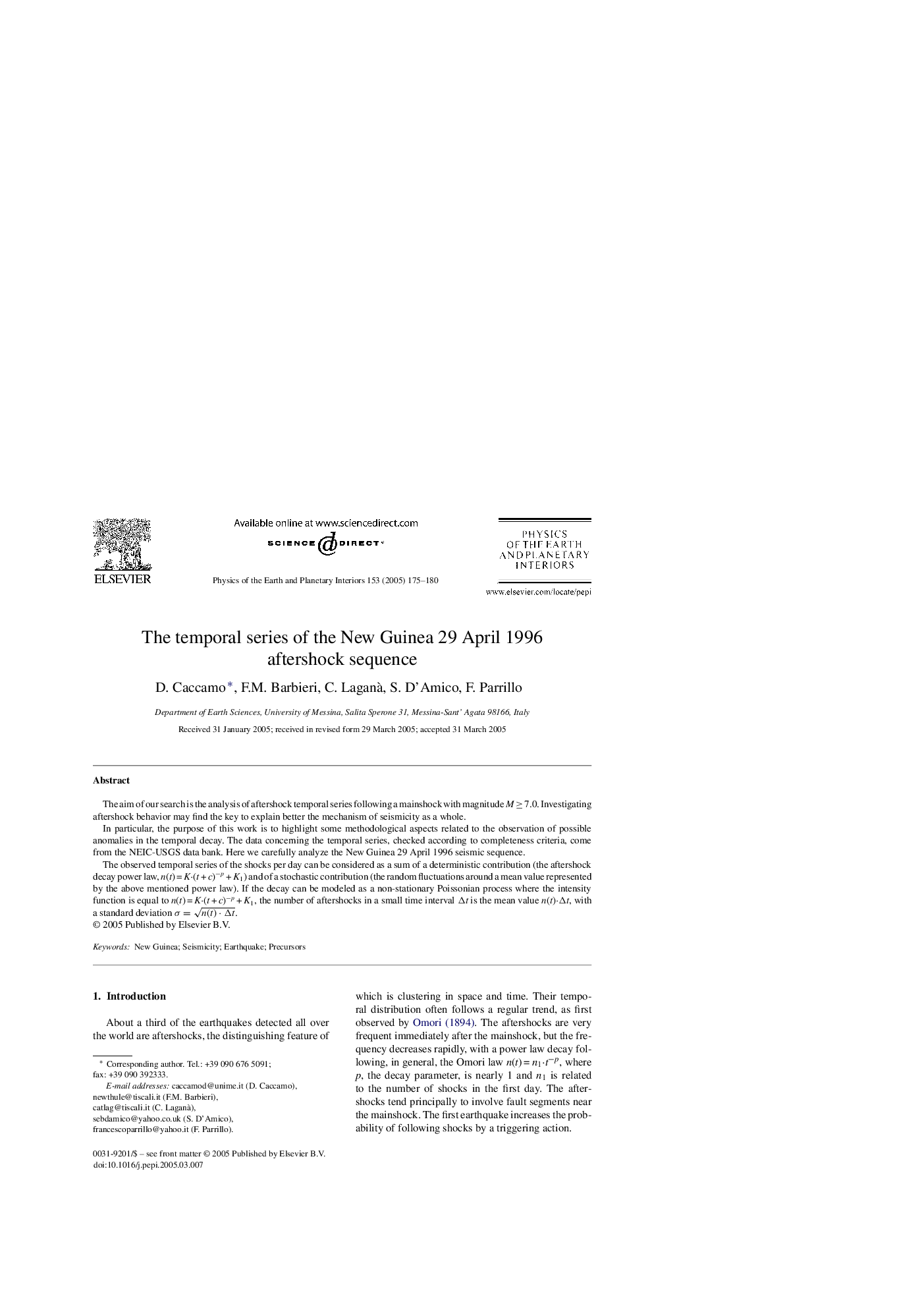| Article ID | Journal | Published Year | Pages | File Type |
|---|---|---|---|---|
| 10121234 | Physics of the Earth and Planetary Interiors | 2005 | 6 Pages |
Abstract
The observed temporal series of the shocks per day can be considered as a sum of a deterministic contribution (the aftershock decay power law, n(t) = K·(t + c)âp + K1) and of a stochastic contribution (the random fluctuations around a mean value represented by the above mentioned power law). If the decay can be modeled as a non-stationary Poissonian process where the intensity function is equal to n(t) = K·(t + c)âp + K1, the number of aftershocks in a small time interval Ît is the mean value n(t)·Ît, with a standard deviation Ï=n(t)â
Ît.
Related Topics
Physical Sciences and Engineering
Earth and Planetary Sciences
Geophysics
Authors
D. Caccamo, F.M. Barbieri, C. Laganà , S. D'Amico, F. Parrillo,
